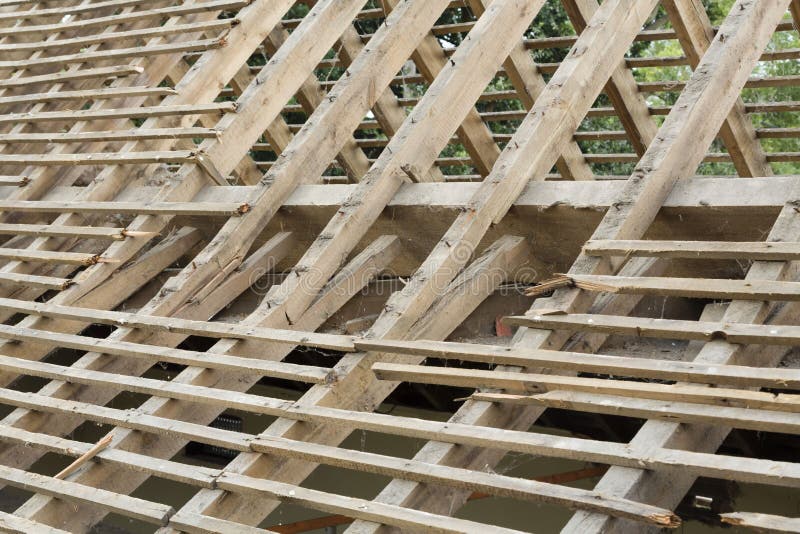
In most cases complete replacement of a timber will be impossible by traditional means without scaffolding or roof removal, but a TRS or timber resin splice kit will allow the low disturbance (and therefore cheaper) repair of beams, roof purlins, tie beams, lintels, joists and rafters. Removing complete timbers or carrying out traditional splices in joists, rafters and other structural timbers requires considerable opening up of ceilings, floors and roofs, and most people would rather not take their houses apart.
#Repairing broken rafters how to#
To these ends and in this project we will deal with how to repair structural timbers and we are very pleased to introduce a wonderful new technology known as the Timber Resin Splice System more on this can be seen in our repairing structural joists project here.

Very often, even if it were possible to bolt a new section of timber on, the overlap for the bolts in most cases were so long it was almost like replacing the entire timber anyway. From a timber lintel in a Georgian terrace, to a huge tie beam in a barn conversion, if a new piece could not be spliced, or bolted on, the lot had to come out. Once the roof has been fixed, it’s a good idea to have routine inspections on your roof every year.Repairing structural timber has always been an expensive and time consuming operation.
#Repairing broken rafters professional#
If you decide it’s not a project you can easily take on, a professional roofer can make sure the correct steps are taken with expertise and quality materials in mind. It’s essential to take that first step to see why your roof is sagging, dipping, or bowing due to weight, rot, or normal wear and tear. When considering whether to fix a sagging roof with a do-it-yourself method, there are many aspects to take into account. Experienced roofers know precisely the type of materials and tools that are needed to finish the process correctly. An expert can effectively finish the task while helping you avoid long-term expenses and headaches. Unless you have tremendous experience repairing sagging roofs, it would likely be very hard to complete the task in a satisfactory and safe way. If you have any doubts about your abilities to fix a sagging roof on your own, or if you’re having trouble DIY-ing this task, you may want to hire a roofing professional. Photo: STEP 8: Contact a roofing professional.

Take a look at your home from the curb, and then walk around the entire house and assess the sagging ridge line, bowing, or dips.If the structural beams have been damaged, prices can rise significantly however, if only a small portion of the roof needs repairing, the cost could be lower. The extent of the damage will determine the cost of the repair. If your roof is sagging, it may be because of broken trusses or rafters that need fixing. This vital step can help you assess the damage and plan material costs. First, an inspection is needed to figure out why your roof is sagging and what exactly is causing it to droop.


Fixing a sagging roof is an extensive project, so you’ll want to make sure that you are experienced in roofing to avoid significant issues or risk a faulty job.


 0 kommentar(er)
0 kommentar(er)
